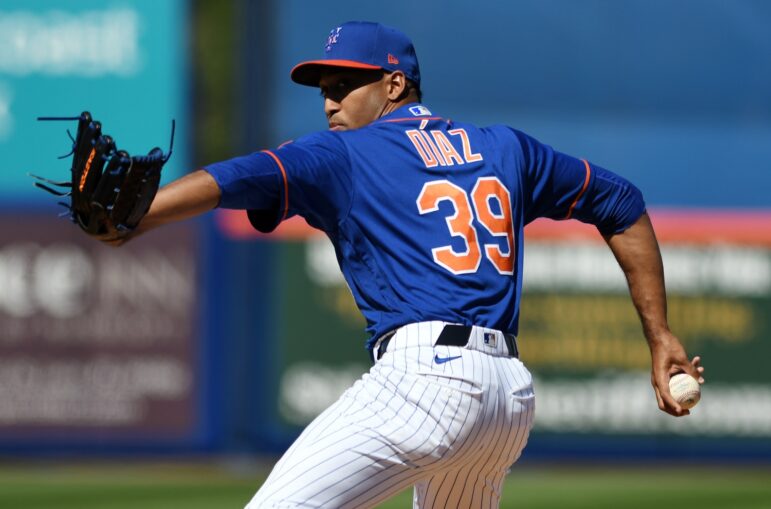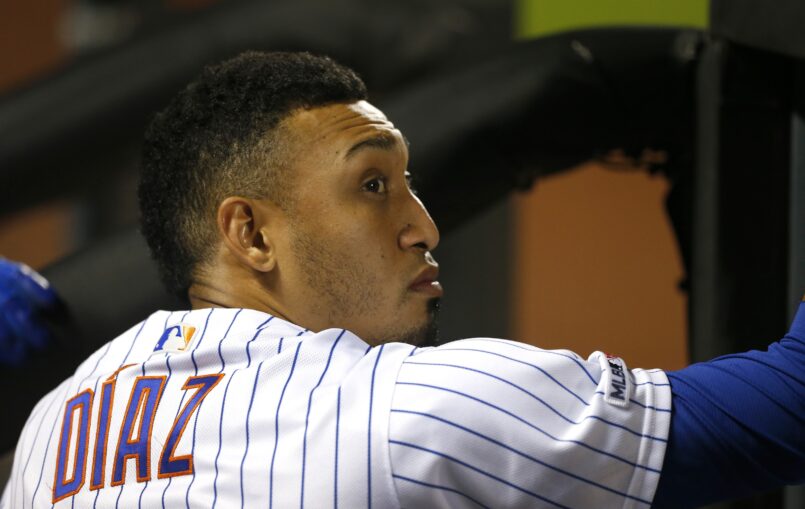
Mention the name Edwin Diaz to any Mets fan, and the reaction will likely be visceral.
Many will revile the trade that brought the enigmatic closer to Queens. Others will fault GM Brodie Van Wagenen for trading two top prospects, Jarred Kelenic and Justin Dunn, as well as Gerson Bautista, Jay Bruce, and Anthony Swarzak to Seattle for Diaz and Robinson Cano. Nearly all will groan about Diaz’s seven blown saves in 2019.
Diaz had perplexing numbers in 2019. His 5.59 ERA was unsightly. However, he had 99 strikeouts in 58 innings pitched. His average fastball velocity was 97.8 mph. But his WHIP was nearly 1.4, most importantly, he allowed 15 home runs (didn’t it seem like even more?).
Diaz, for the time being, has lost his closer’s role. Thus far in 2020, he’s pitched 4 1/3 innings, and the overall trend is similar to 2019. He has an ERA of 4.15, to go with eight strikeouts. He blew a save against the Braves opening weekend, allowing a game-tying home run to Marcell Ozuna.
In his last two appearances against the Braves and Nationals, Diaz has thrown a combined two innings, allowing no hits and striking out three. This very small sample size comes in a non-closer role. Perhaps that factors in to the improved performance. But maybe there’s something more to it.
After his outing against the Nationals on Monday, there was talk of Diaz changing his arm angle on his slider before the Sunday outing, after some work with pitching coach Jeremy Hefner. The effectiveness of the slider has been the key to Diaz’s past success. In his last two appearances, Diaz’s slider has had late, sharp break, and he’s seen much better results.
Putting numbers to the above, so far in 2020 Diaz has thrown his slider 39.4% of the time (his last two outings comprise half of his season’s innings total). Last year, he threw it 33.9% of the time. In 2018, when Diaz posted 57 saves, he threw 37.3 % sliders.
Looking at the opposition’s contact against him, 33.3% of the time in 2020, batters have made soft contact. Last year, soft contact was only 16.7%. Hard contact in 2020 is 33.3%, as opposed to 48.1% last year.
Further, batters have pulled their contact 16.7% of the time this year, versus 43.4% of the time last year. Diaz has, for the most part (Ozuna as an exception), been able to stay away from hitters’ power zones in 2020.
So what can this mean? First, as noted, the statistics from 2020 are from a very small sample size and that has to be taken into consideration. If Diaz has been able to regain his slider, and his confidence in throwing it more often, it can be a step in the right direction for his being the pitcher the Mets thought they were getting in 2019.
The contact percentages when Diaz relies on his slider are very telling. In 2018, opposing hitters made hard contact against him 29.3% of the time, when his slider was sharp and he used it as his go-to pitch. In 2019, when he threw the slider less and it was not as sharp, despite an average velocity of 97.8 mph on his fastball, hard contact was 48.1% as pointed out above. Diaz needs his fastball to set up that wipeout slider. The fastball has not been shown to be his consistent out pitch.
The Mets did not part with top prospects to receive a 7th inning relief pitcher. They traded for, and expect, an elite closer. Edwin Diaz has not been close to that thus far.
If Diaz’s work with Hefner has enabled him to rediscover his out pitch, while there is still quite a way to go (such as pitching in high-leverage situations), perhaps Diaz has found a building block to becoming a successful closer in Flushing.
















